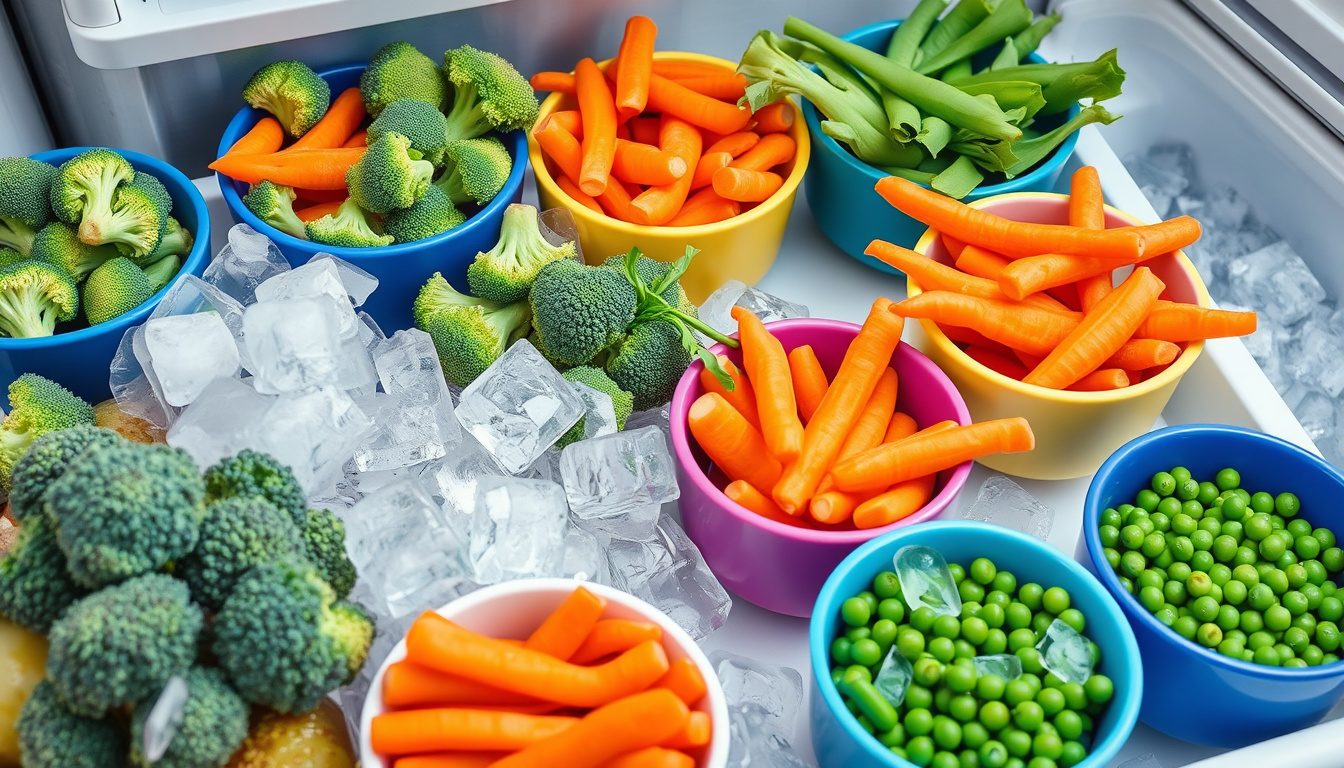Preserving vegetables through freezing allows you to enjoy your garden’s bounty year-round, but how you prepare them before freezing is crucial. The key technique in this process is blanching, which enhances both the safety and quality of the vegetables. Below, we’ll delve into the importance of blanching, the methods to effectively blanch various vegetables, and key tips to optimize this preparation process.
What is Blanching and Why is it Necessary?
Blanching involves briefly cooking vegetables in boiling water or steaming them, followed by immediate cooling in ice water. This process serves several essential functions:
-
Inactivates Enzymes: Fresh vegetables contain enzymes that can degrade their quality over time, affecting their flavor, color, and texture. Blanching halts these enzymatic reactions.
-
Cleanses the Surface: Blanching helps eliminate surface dirt and microorganisms, enhancing food safety.
-
Preserves Nutrients: While directly freezing can trap enzymes that degrade nutrients, blanching minimizes this risk, preserving vitamins and minerals more effectively.
-
Enhances Color and Flavor: The process brightens the color of many vegetables, making them appear more appealing when thawed, and helps retain their fresh taste.
Step-by-Step Blanching Process

-
Prepare Your Vegetables:
Thoroughly wash the vegetables, removing any dirt or blemishes. Cut them into uniform sizes to ensure even cooking. -
Boil Water:
For every pound of vegetables, bring one gallon of water to a rolling boil. This ratio ensures that the water temperature does not drop significantly when the vegetables are added. -
Blanching Methods:
- Water Blanching: Submerge the prepared vegetables into the boiling water. Cover the pot to maintain heat and start timing as soon as the water resumes boiling.
- Steam Blanching: Use a steamer basket above boiling water, ensuring the vegetables do not touch the water. This method may take 1.5 times longer than water blanching but can be gentler on delicate vegetables.
-
Cooling:
Immediately plunge the blanched vegetables into an ice water bath to stop the cooking process. This cooling should last as long as the blanching time to preserve optimal texture and color. -
Drain and Dry:
Thoroughly drain the cooled vegetables and lay them out on a clean kitchen towel to remove excess moisture before freezing.
Recommended Blanching Times for Common Vegetables
The blanching times depend on the type of vegetable. Below are some common vegetables and their recommended blanching durations:
| Vegetable | Water Blanching Time (minutes) | Steam Blanching Time (minutes) |
|---|---|---|
| Broccoli (florets) | 3 | 5 |
| Carrots (sliced) | 2 | 3 |
| Green Beans | 3 | 5 |
| Cauliflower (florets) | 3 | 5 |
| Peas | 1.5 – 3 | 4 – 5 |
| Corn (on the cob) | 7 (small), 9 (medium), 11 (large) | 10-16 (cooling times doubled) |
Common Mistakes to Avoid
- Underblanching: Not blanching for the proper duration can actually accelerate enzyme activity, worsening quality.
- Overblanching: Too long in boiling water can result in mushy vegetables and loss of flavor and nutrients. Stick to recommended times.
- Incorrect Cooling: Failure to cool thoroughly can lead to overcooking, which affects texture.
Conclusion
Blanching is an essential technique for anyone looking to freeze vegetables effectively. By taking the time to blanch, you not only safeguard the flavor and nutritional content of your produce but also improve safety and convenience for future meals. With this knowledge, you can confidently preserve your harvest and reduce food waste, enjoying the taste of fresh vegetables throughout the year.
>> Chest Freezer Reviews <<
>> Upright Freezer Reviews <<

